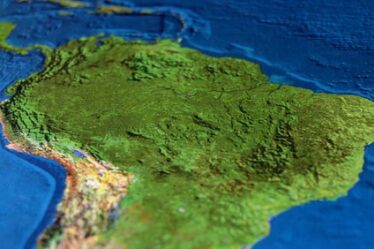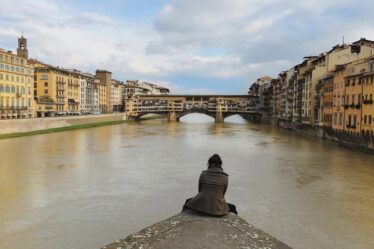
Finding the best things to do on vacation can make your trip unforgettable, but it can be overwhelming with so many options available. Here’s a comprehensive guide to help you discover and choose the best activities and experiences for your vacation:
1. Research Your Destination
Before you even start packing, take the time to research your destination. Understanding the location’s culture, history, and natural attractions can give you insight into the best activities to try.
- Travel Blogs and Websites: Read articles and guides from reputable travel blogs and websites. They often offer detailed insights, personal experiences, and hidden gems that aren’t always found in mainstream travel guides.
- Social Media: Platforms like Instagram, Pinterest, and TikTok are great for discovering popular and off-the-beaten-path activities. Search for hashtags related to your destination to see what others are doing and recommending.
- YouTube: Watch travel vlogs and destination guides on YouTube. These videos can give you a visual preview of what to expect and may introduce you to unique activities.
- Books and Travel Guides: Traditional travel guides, like Lonely Planet or Fodor’s, are still valuable resources. They often provide comprehensive overviews, maps, and suggested itineraries.
2. Use Travel Apps
In the digital age, travel apps are invaluable for finding things to do:
- TripAdvisor: This app allows you to read reviews, see traveler photos, and find top-rated attractions, restaurants, and tours.
- Google Maps: Explore your destination on Google Maps by searching for nearby attractions, restaurants, and points of interest. The “Explore” feature can suggest popular spots around you.
- GetYourGuide and Viator: These apps offer a wide range of tours and activities that you can book directly. They often include reviews and ratings to help you make an informed decision.
- Eventbrite: Check out local events, festivals, and workshops happening during your stay. Eventbrite is a great tool for finding unique experiences that aren’t necessarily touristy.
3. Consider Your Interests
Your vacation should be tailored to what you enjoy. Reflect on what excites you most:
- Outdoor Enthusiasts: If you love nature, look for hiking trails, national parks, beaches, or adventure sports. Research the best outdoor activities available at your destination.
- History Buffs: If history intrigues you, explore museums, historical landmarks, and guided tours that delve into the past of your destination.
- Foodies: For culinary lovers, research the best local restaurants, food markets, and cooking classes. Trying local cuisine is often one of the highlights of any trip.
- Culture Seekers: Look for cultural experiences like local festivals, traditional performances, or art galleries. Immerse yourself in the local culture by attending events and exploring cultural sites.
4. Seek Local Recommendations
Locals often know the best spots that aren’t listed in travel guides. Here’s how to tap into local knowledge:
- Ask Your Host or Hotel Staff: Whether you’re staying in a hotel, Airbnb, or hostel, ask the staff or host for recommendations. They often know about lesser-known attractions and can suggest authentic local experiences.
- Join Local Tours: Guided tours led by locals can offer deep insights and take you to places you wouldn’t discover on your own. Look for walking tours, food tours, or cultural tours.
- Visit Local Tourist Offices: Tourist offices provide maps, brochures, and sometimes offer free walking tours. They can be a great resource for current events and attractions.
5. Plan Ahead but Stay Flexible
While it’s essential to have a plan, leaving room for spontaneity can lead to unexpected and memorable experiences:
- Create a Loose Itinerary: Plan your must-do activities but leave gaps in your schedule for exploration and relaxation. This flexibility allows you to adapt to changes, like weather or new opportunities.
- Book Popular Attractions in Advance: If there are activities or sites you don’t want to miss (like famous landmarks or popular tours), book them in advance to secure your spot.
- Leave Time for Exploration: Sometimes, the best experiences come from simply wandering around and seeing where the day takes you. Allow yourself the freedom to explore without a strict schedule.
6. Balance Popular Attractions with Hidden Gems
While iconic landmarks are often worth visiting, balancing them with lesser-known spots can offer a more well-rounded experience:
- Visit Major Attractions Early or Late: To avoid crowds, visit popular sites early in the morning or later in the evening. This timing often provides a more enjoyable experience.
- Explore Beyond the Tourist Areas: Wander off the beaten path to discover local neighborhoods, parks, and eateries. These areas often provide a more authentic glimpse into the destination’s culture.
7. Consider the Season and Weather
The time of year and local weather can significantly impact your vacation activities:
- Check Seasonal Activities: Some activities are only available or best experienced in certain seasons. For example, whale watching might be seasonal, or a ski resort might offer different activities in summer.
- Prepare for the Weather: Ensure your plans align with the weather. For instance, outdoor activities might be less enjoyable during the rainy season, or certain attractions might be closed.
8. Look for Unique and Local Experiences
Every destination has something unique to offer. Look for activities that are specific to the area you’re visiting:
- Traditional Crafts and Workshops: Engage in a workshop to learn a local craft, such as pottery in Japan or weaving in Peru. These experiences offer hands-on learning and a deeper connection to the culture.
- Local Festivals and Events: Attending a local festival or event can provide insight into the culture and traditions of the place you’re visiting. Research ahead to see if there are any festivals during your stay.
- Unique Natural Wonders: Seek out natural phenomena or unique landscapes that are specific to the area, such as bioluminescent bays, unusual rock formations, or rare wildlife.
9. Review and Reflect
After your vacation, take time to review your experiences. Reflecting on what you enjoyed most can help you plan even better trips in the future:
- Write a Travel Journal: Documenting your experiences, what you loved, and even what didn’t go as planned can be useful for future travels and for sharing tips with others.
- Share Your Experience: Post reviews on travel platforms like TripAdvisor or Google Maps. Sharing your experience helps others and can be a way to connect with fellow travelers.
- Plan Your Next Trip: Use your newfound knowledge to plan future adventures. Consider returning to a favorite destination or exploring somewhere new with similar offerings.
Conclusion
Finding the best things to do on vacation involves a combination of research, local insights, and personal preference. By balancing well-known attractions with unique local experiences and staying flexible in your plans, you can create a vacation that’s not only enjoyable but also deeply memorable.


